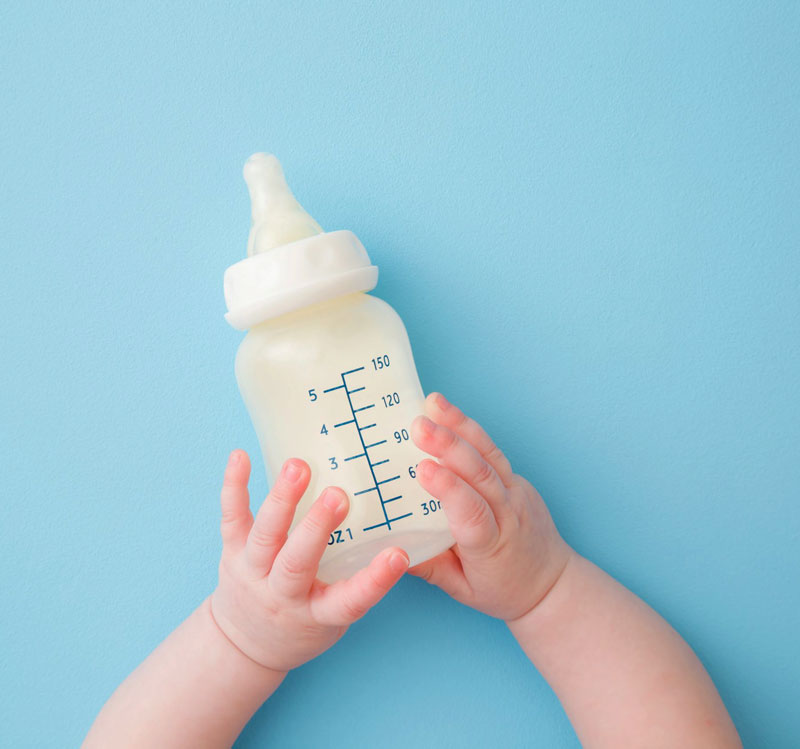
Novel ingredients that are built with biology
By John Cumbers Contributor Manufacturing Synthetic biology networker, founder & investor, space bioengineer.
Synthetic biology has already created a world of new foods that would have sounded impossible not so long ago. Today you can sink your teeth into a plant-based “burger that bleeds” with vegan cheese, then enjoy cow-free dairy ice cream for dessert. But what if bioengineering could make nutrition not just healthier and more humane, but more natural—closer to original biology?
Of all the milk produced by mammals, human milk is the most complex. Refined over millions of years of evolution, it contains more than 200 unique sugars for infant nutrition, quadruple that of the 50 in cow’s milk. Studies of breastfeeding show that mother’s milk plays a key role in boosting infant nutrition, immune system development, and gut health. In the modern era, however, breastfeeding is not always an option for caregivers.
That’s why the gold standard of infant formula is to create a product as similar to breast milk as possible, so babies can get the complex blend of nutrients that were tailored for them by nature. That’s exactly what Conagen has accomplished, again, with two synthetic biology breakthroughs that bring infant formula even closer to actual human milk.
Earlier this year, I wrote about Conagen’s breakthrough production of lactoferrin, a milk protein crucial to infant nutrition. Now, Conagen is tackling two more compounds found in breast milk: naturally occurring complex sugars called human milk oligosaccharides (HMOs), and a tasteless, odorless fatty acid called FBA that supports gut and immune system development. After lactoferrin, these are Conagen’s second and third offerings for fortifying infant formula.
HMOs serve an important signaling function in a newborn’s body: they help the young immune system tell the difference between dangerous foreign bodies, such as bacteria, and beneficial nutrients from food. The immune system’s ability to distinguish friend from foe is what prevents the emergence of food allergies at a young age. Meanwhile, FBA promotes the production of butyrate, a pre- and postbiotic that supports healthy cellular development of the gut lining.
If mother’s milk came with a nutrition facts label, HMOs would be the fourth ingredient after water, fat, and lactose. The most prevalent HMO in mother’s milk is known as 2’-FL. Because this HMO is not found in cow’s milk, infant formula needs to be supplemented with lab-made 2’-FL. Producing 2’-FL has required the use of genetically modified organisms (GMOs)—until now.
In a process similar to how cheese is made by adding enzymes to milk, Conagen uses bioconversion to synthesize and then purify 2’-FL. Unlike its competitors, Conagen can perform this chemistry outside of a living cell. This results in a more reliable and streamlined production process.
For Casey Lippmeier, VP of innovation at Conagen, reproducing the benefits of natural mother’s milk is a personal goal. A father and a scientist, Dr. Lippmeier has been studying how to improve infant formula for his entire career. “Mothers who don’t have any other option than to use formula can feel better and better with every new improvement we make on health,” he says.
Manufacturers can expect Conagen’s HMOs to be available in the next few months, or partner with Conagen in the licensing of FBAs for other applications.
From pharmaceuticals to supplements to flavors, Conagen’s fermentation process has already put synthetic biology on the map within industrial manufacturing. Now, with its latest human milk compounds, the company continues to bring infant formula closer to the optimal nutrition of mother’s milk. A healthier world for every newborn: that’s building a better world with biology.